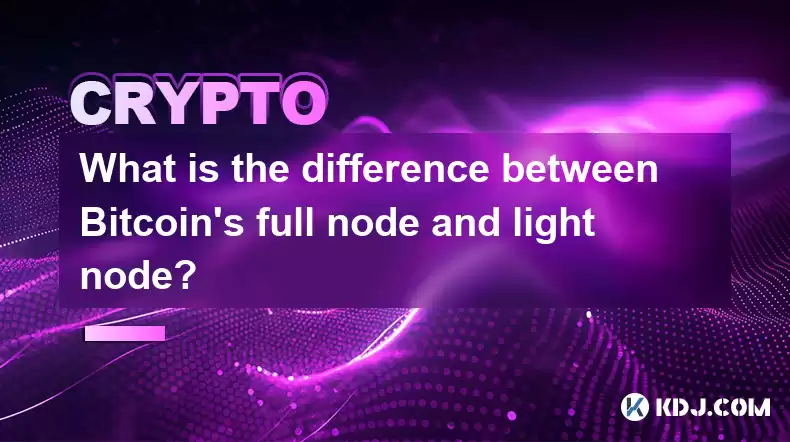-
 Bitcoin
Bitcoin $116900
0.00% -
 Ethereum
Ethereum $4280
5.48% -
 XRP
XRP $3.265
-1.45% -
 Tether USDt
Tether USDt $1.000
-0.01% -
 BNB
BNB $807.0
1.41% -
 Solana
Solana $183.1
2.93% -
 USDC
USDC $0.9999
0.00% -
 Dogecoin
Dogecoin $0.2440
6.50% -
 TRON
TRON $0.3357
-0.88% -
 Cardano
Cardano $0.8178
2.63% -
 Hyperliquid
Hyperliquid $44.13
7.45% -
 Chainlink
Chainlink $21.39
9.09% -
 Stellar
Stellar $0.4524
-0.84% -
 Sui
Sui $3.957
2.13% -
 Bitcoin Cash
Bitcoin Cash $572.7
-2.54% -
 Hedera
Hedera $0.2671
1.54% -
 Avalanche
Avalanche $24.77
4.17% -
 Ethena USDe
Ethena USDe $1.001
0.02% -
 Litecoin
Litecoin $122.3
-1.94% -
 Toncoin
Toncoin $3.432
2.26% -
 UNUS SED LEO
UNUS SED LEO $9.007
0.49% -
 Shiba Inu
Shiba Inu $0.00001396
5.26% -
 Uniswap
Uniswap $11.09
1.64% -
 Polkadot
Polkadot $4.155
4.57% -
 Dai
Dai $1.000
0.00% -
 Pepe
Pepe $0.00001253
5.11% -
 Cronos
Cronos $0.1588
2.67% -
 Bitget Token
Bitget Token $4.512
0.05% -
 Monero
Monero $275.0
0.64% -
 Ethena
Ethena $0.7527
15.10%
What is the difference between Bitcoin's full node and light node?
Bitcoin full nodes independently verify the entire blockchain, ensuring network security, while light nodes rely on them for verification, requiring fewer resources but offering less functionality.
Mar 14, 2025 at 11:06 am

Key Points:
- Storage: Full nodes store the entire Bitcoin blockchain, while light nodes only store a small portion.
- Verification: Full nodes independently verify every transaction, while light nodes rely on full nodes for verification.
- Security: Full nodes contribute significantly to the network's security and decentralization, while light nodes have less impact.
- Resource Requirements: Full nodes require significant storage space and bandwidth, while light nodes have minimal resource requirements.
- Functionality: Full nodes can perform all network functions, while light nodes have limited functionality.
What is the difference between Bitcoin's full node and light node?
The Bitcoin network operates through a distributed ledger technology, where numerous nodes maintain and validate the blockchain. Two primary types of nodes exist: full nodes and light nodes. Understanding their differences is crucial for grasping the intricacies of the Bitcoin ecosystem.
Full Nodes: The Backbone of Bitcoin
A full node, also known as a validating node, downloads and verifies the entire Bitcoin blockchain. This involves storing every transaction ever recorded on the network. This complete copy allows the full node to independently verify the validity of each transaction and block, ensuring the integrity of the blockchain. This independent verification is crucial for the security and decentralization of the Bitcoin network.
Full nodes play a vital role in the consensus mechanism of Bitcoin, ensuring that only valid transactions are added to the blockchain. They actively participate in the process of mining and validating new blocks, contributing to the overall health and security of the network. This active participation, however, comes at a cost – significant storage space and bandwidth are required.
Light Nodes: A Lightweight Approach
In contrast to full nodes, light nodes (also known as simplified payment verification or SPV nodes) download and store only a fraction of the blockchain. Instead of storing the entire blockchain history, they maintain a smaller subset, typically including only the headers of each block. This significantly reduces storage requirements and bandwidth consumption.
Light nodes rely on full nodes for verification. They connect to full nodes to query the status of specific transactions, confirming their validity without needing to download the entire blockchain. This makes them ideal for users with limited resources or those prioritizing speed over complete verification.
Light nodes are primarily used for checking the balance of a wallet and making transactions. They don't participate in the consensus mechanism, and their contribution to the network's security and decentralization is limited.
Resource Requirements: A Key Differentiator
The most significant difference between full nodes and light nodes lies in their resource requirements. Full nodes demand substantial storage capacity (currently over 400GB and growing), considerable bandwidth, and processing power to download, store, and process the entire blockchain.
Conversely, light nodes require minimal resources. They need only enough storage for the block headers and the necessary software to connect to and interact with full nodes. This makes light nodes accessible to a wider range of users with limited computational resources.
Security Implications: Decentralization vs. Centralization Risk
The security and decentralization of the Bitcoin network are intrinsically linked to the number of full nodes operating. A larger number of full nodes strengthens the network against attacks and ensures its robustness. Each full node independently verifies transactions, making it difficult for malicious actors to manipulate the blockchain.
Conversely, a heavy reliance on light nodes could potentially introduce a degree of centralization risk. If most users rely on a small number of full nodes for verification, these nodes could become points of failure or targets for attacks.
Functionality: Full Control vs. Limited Capabilities
Full nodes possess the full functionality of the Bitcoin network. They can participate in mining, relay transactions, and independently verify the entire blockchain. They are the true guardians of the Bitcoin network's integrity.
Light nodes, on the other hand, have limited functionality. They can primarily send and receive transactions and check their balances. They lack the ability to participate in mining or fully verify the blockchain's integrity independently.
Choosing the Right Node: Full vs. Light
The choice between running a full node and a light node depends on individual needs and resources. Users with ample storage space, bandwidth, and processing power should consider running a full node to contribute to the network's security and decentralization.
For users with limited resources, a light node offers a practical alternative for interacting with the Bitcoin network without the burden of managing a full node. The decision ultimately balances the level of security and decentralization desired with the available resources.
Frequently Asked Questions:
Q: Can I use a light node for mining Bitcoin?
A: No. Light nodes lack the ability to participate in the consensus mechanism required for mining. Mining requires a full node to download and verify all transactions.
Q: Is it safer to use a full node or a light node?
A: From a purely security standpoint, using a full node is safer because it allows independent verification of all transactions. However, light nodes are also secure as long as they connect to reputable and trustworthy full nodes.
Q: How much storage space does a full node require?
A: The storage requirement for a full node is constantly growing as the blockchain expands. Currently, it's over 400GB and continues to increase.
Q: What are the bandwidth requirements for a full node?
A: Bandwidth requirements for a full node vary depending on network activity and connection speed. However, it is generally high, especially during periods of high transaction volume.
Q: Can I run a full node on a low-powered device?
A: It is unlikely. Running a full node requires significant processing power, storage space, and bandwidth, which most low-powered devices cannot provide efficiently.
Disclaimer:info@kdj.com
The information provided is not trading advice. kdj.com does not assume any responsibility for any investments made based on the information provided in this article. Cryptocurrencies are highly volatile and it is highly recommended that you invest with caution after thorough research!
If you believe that the content used on this website infringes your copyright, please contact us immediately (info@kdj.com) and we will delete it promptly.
- Shiba Inu, Pepe, and Remittix: A Tale of Memes, Hype, and Real-World Utility
- 2025-08-10 08:30:12
- Ethereum Price, ETH Tokens, Rally Prediction: Is a New All-Time High In Sight?
- 2025-08-10 08:30:12
- XRP, Elon Musk, and Wealth: A Crypto Conundrum
- 2025-08-10 08:50:12
- Retire Early with Crypto: High-Conviction Plays Beyond Bitcoin
- 2025-08-10 08:50:12
- BlockDAG, Render, and Polkadot: Charting the Course for Long-Term Crypto Dominance
- 2025-08-10 08:55:21
- Toncoin's Ascent: Price Predictions and the VERB Strategy Impact
- 2025-08-10 08:55:21
Related knowledge

What are the key features of Bitcoin?
Aug 10,2025 at 02:50am
Decentralization and Peer-to-Peer NetworkOne of the most defining characteristics of Bitcoin is its decentralized nature. Unlike traditional financial...

Can the Bitcoin protocol be changed?
Aug 07,2025 at 01:16pm
Understanding the Bitcoin ProtocolThe Bitcoin protocol is the foundational set of rules that govern how the Bitcoin network operates. It defines every...

What happens to Bitcoin transactions once they are confirmed?
Aug 09,2025 at 05:22am
Understanding Bitcoin Transaction ConfirmationWhen a Bitcoin transaction is initiated, it is broadcast to the network and placed in a pool of unconfir...

How are Bitcoin transactions verified?
Aug 08,2025 at 06:57am
Understanding Bitcoin Transaction VerificationBitcoin transactions are verified through a decentralized network of nodes and miners that ensure the le...

How does decentralization make Bitcoin secure?
Aug 08,2025 at 09:35am
Understanding Decentralization in BitcoinDecentralization is a foundational principle of Bitcoin's architecture and plays a critical role in its secur...

What are some common misconceptions about Bitcoin?
Aug 07,2025 at 07:22pm
Bitcoin is Just Like Regular MoneyA widespread misconception is that Bitcoin functions identically to traditional fiat currencies like the US dollar o...

What are the key features of Bitcoin?
Aug 10,2025 at 02:50am
Decentralization and Peer-to-Peer NetworkOne of the most defining characteristics of Bitcoin is its decentralized nature. Unlike traditional financial...

Can the Bitcoin protocol be changed?
Aug 07,2025 at 01:16pm
Understanding the Bitcoin ProtocolThe Bitcoin protocol is the foundational set of rules that govern how the Bitcoin network operates. It defines every...

What happens to Bitcoin transactions once they are confirmed?
Aug 09,2025 at 05:22am
Understanding Bitcoin Transaction ConfirmationWhen a Bitcoin transaction is initiated, it is broadcast to the network and placed in a pool of unconfir...

How are Bitcoin transactions verified?
Aug 08,2025 at 06:57am
Understanding Bitcoin Transaction VerificationBitcoin transactions are verified through a decentralized network of nodes and miners that ensure the le...

How does decentralization make Bitcoin secure?
Aug 08,2025 at 09:35am
Understanding Decentralization in BitcoinDecentralization is a foundational principle of Bitcoin's architecture and plays a critical role in its secur...

What are some common misconceptions about Bitcoin?
Aug 07,2025 at 07:22pm
Bitcoin is Just Like Regular MoneyA widespread misconception is that Bitcoin functions identically to traditional fiat currencies like the US dollar o...
See all articles

























































































